Read more
There are both natural and anthropogenic sources of methane emissions. Agriculture causes roughly 44% of anthropogenic methane emissions, with the remainder coming from fossil fuels and waste. The three largest sources of agricultural methane globally are ruminant livestock via enteric fermentation (~68% of agricultural methane emissions), rice paddies via the anaerobic decomposition of organic matter during flooding (~25%); and livestock manure from both ruminants and non-ruminants via the anaerobic decomposition of manure (~7%). A key difference between methane and CO2 is their relative durations in the atmosphere. CO2 can persist in the atmosphere for centuries or longer. This means that a constant rate of CO2 emissions (of, for example 100 tonnes CO2 /day) will have a steady warming effect, since each pulse of CO2 emitted has an effectively permanent effect and so every additional new pulse of CO2 adds more warming to that of the preceding pulse. In other words, CO2 ’s effects are cumulative. In contrast, methane has an average atmospheric lifetime of only about 10 years. This means that if there is a constant rate of methane emissions, each new pulse of methane emitted essentially replaces a previously emitted pulse (whose warming effects quickly dwindle over time).
So at this constant rate, each subsequent molecule of methane emitted maintains the level of warming produced by the one preceding it, but it does not significantly add to it. Temperatures remain elevated above what would be the case in the absence of that methane emitted, but they do not result in the consistent incremental rise in long-term temperature for every tonne emitted, as is the case for CO2.
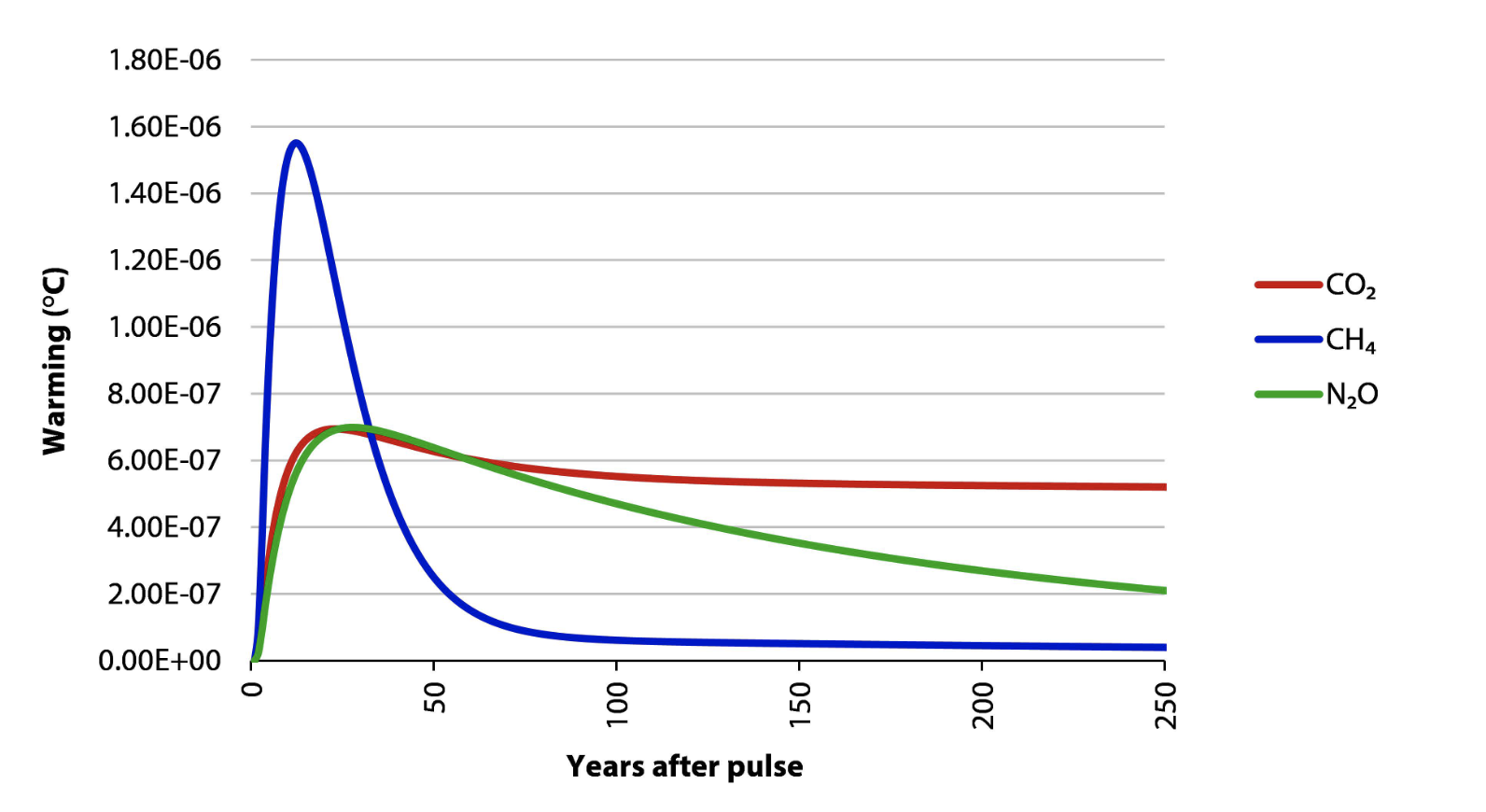
Figure 1. Global warming response to a one-off pulse emissions of 1Mt CO2 -equivalent of CO2, CH4 or N2O, as defined using the 100-year Global Warming potential. Response functions and emission metric values as in the IPCC 5th Assessment Report (excluding climate-carbon cycle feedbacks). This figure is reproduced with permission from the UK Committee on Climate Change report ‘Land use: Policies for a Net Zero UK’
Because of the cumulative warming effects of CO2 emissions, CO2 emissions must be brought down to net zero, and other long-lived GHGs such as nitrous oxide show similar dynamics. In contrast, methane’s short atmospheric lifetime means that the overall planetary warming effects of methane depend more on the rate of methane emissions, rather than the cumulative total emitted. If the current rate of global methane emissions is maintained and not increased, there will be relatively little additional planetary warming - although, as noted, the global temperature will be maintained at a higher level than it would have been if there were no methane emissions at all. Any decrease in the rate of methane emissions will have a rapid cooling effect which can contribute significantly to climate change mitigation efforts. Meanwhile, any increase in the rate of methane emissions will produce a steep warming effect. entangled with broader debates about the future of livestock in the Anthropocene. Some of the most salient points of debate are described below.
Debates surrounding agricultural methane
As methane has moved from relative obscurity to centre stage in global climate policy debates, agricultural methane and its links to the global food system have become a focus of debate. Given that the majority of agricultural methane emissions stem from livestock production, discussions about agricultural methane are entangled with broader debates about the future of livestock in the Anthropocene. Some of the most salient points of debate are described below.
Intensive vs. extensive ruminant production systems
The GHG-mitigation potential of different livestock production systems, and the various trade-offs involved with different systems, are a key topic of disagreement. There is limited data on which type of ruminant production system results in fewer total emissions (methane, CO2 , and nitrous oxide). Intensive livestock systems (such as confined animal feeding systems in which livestock are fed highly digestible cereals and proteins) tend to produce higher quantities of milk or meat per unit of methane produced. This means that intensification of ruminant livestock production is often advocated as a mitigation strategy. However, it has been argued that while this approach may lower methane emissions per unit of meat or milk produced, it will likely lock in greater use of fossil fuels (and thus CO2 emissions) and nitrogen fertilisers (thus nitrous oxide emissions) for housing and feed production. In contrast, extensive grazing systems (e.g., pasture-raised ruminants) may emit more methane per unit of meat or milk produced than intensive production systems, but many extensive systems will likely be less dependent on fossil fuel and fertiliser inputs.
Regardless of the type of production system, increasingly research suggests that current production methods cannot meet the ever-increasing global demand for ruminant products without significant climate damage resulting from both ruminant production itself and land use change associated with increased grazing and feed production.
Ruminants vs. pigs and poultry
From a conventional life-cycle assessment (LCA) perspective, pork and poultry (i.e., monogastric) products are less GHG-intensive than ruminant meat products and intensive livestock production systems are less GHG- intensive than extensive systems. These LCAs therefore tend to rank intensively-raised pork and poultry as the most ‘climate friendly’ meat products and grass-fed, and extensively reared beef as the least, suggesting that population-level transitions from ruminant to intensively produced monogastric consumption may hold promise as a climate mitigation strategy.
However, these analyses often miss many of the harmful side effects of intensive livestock production (feed-food competition, high fossil energy use, poor animal welfare, etc.) and the potential beneficial impacts of well-managed, extensive ruminant production systems which can include reduced pressure on arable land (although greater overall land use), the maintenance of soil carbon stores, and in some contexts soil carbon sequestration as well as nutrient cycling. Arguably, in a scenario where demand for meat and dairy products is significantly curtailed in the Global North and flattened in the Global South (thus stabilising or decreasing the rate of methane emissions), extensive ruminant production might offer more environmental advantages than either intensive ruminant or monogastric production systems.
The role of dietary change
Meat from ruminant livestock (e.g., beef and lamb) has the highest methane emissions per gram of protein of any food product and its consumption is highly unequal globally. Even if global methane emissions were stabilised at current levels (which is likely incompatible with limiting global warming to 1.5-2°C), dietary change could still be a powerful contributor to climate change mitigation. Stabilising global methane emissions would require people in Europe, North America, and Oceania (who already eat far more red meat and dairy than the global average) to reduce their consumption, given global population growth and increasing demand for red meat and dairy products in the Global South (where consumption remains well below the global average).
The place of ruminant production and consumption in the Global South
Ruminant livestock play an essential role in the health and well-being of many of the world’s poorest communities. In many countries in the Global South, diets lack diversity and are primarily composed of grains and tubers. In these contexts in particular, animal source foods are an essential source of micronutrients, especially for nutritionally vulnerable populations such as women of childbearing age and children. Beyond nutrition, animal husbandry often plays a critical social and economic role, contributing in many ways to rural livelihoods.

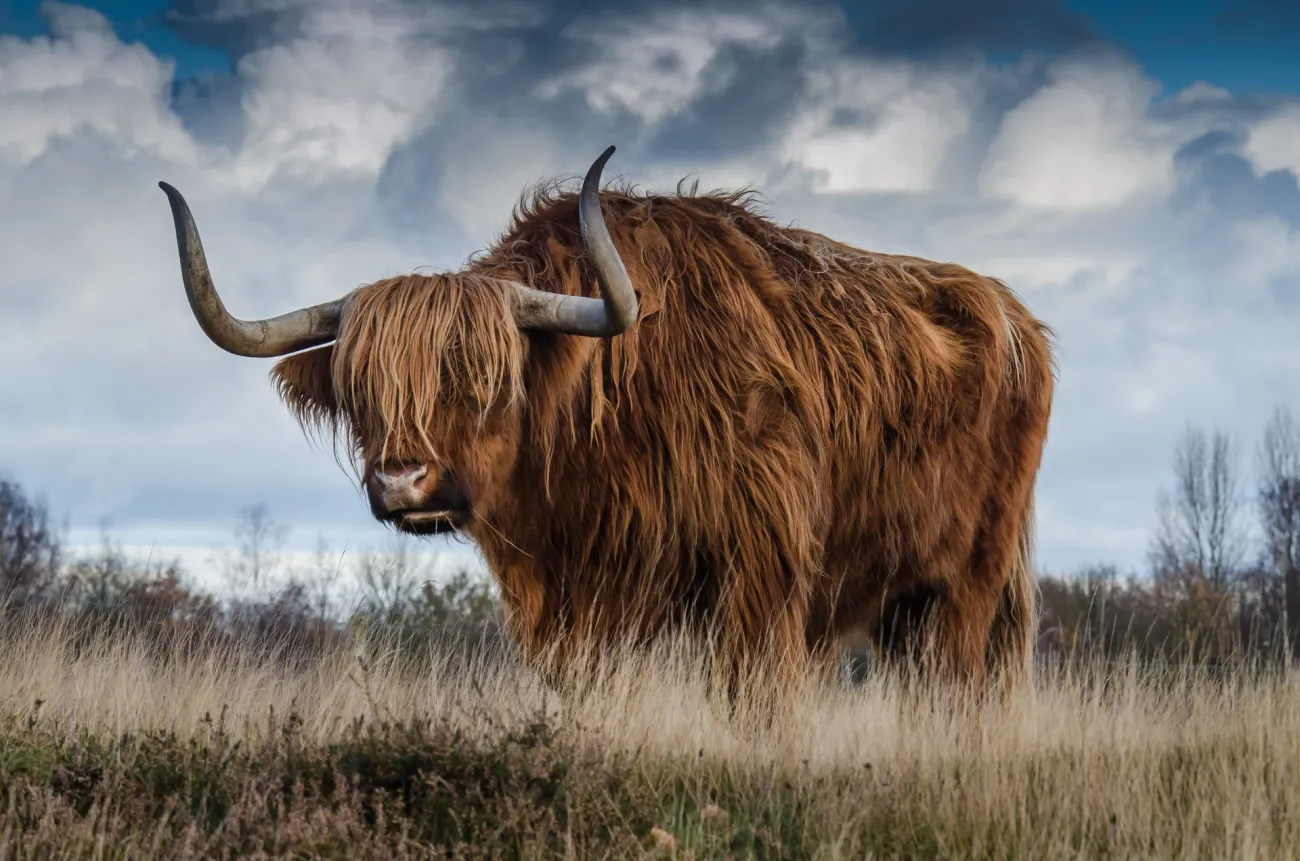
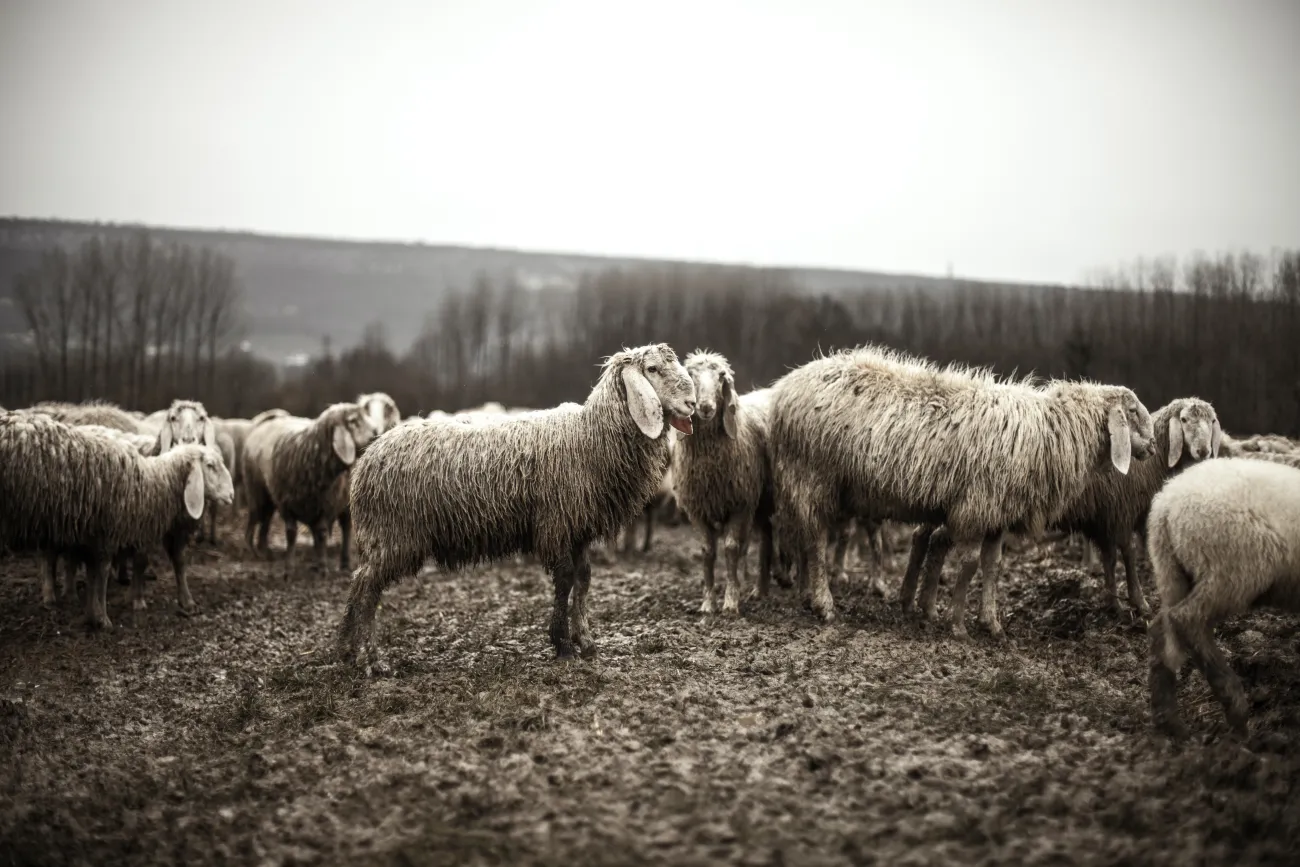
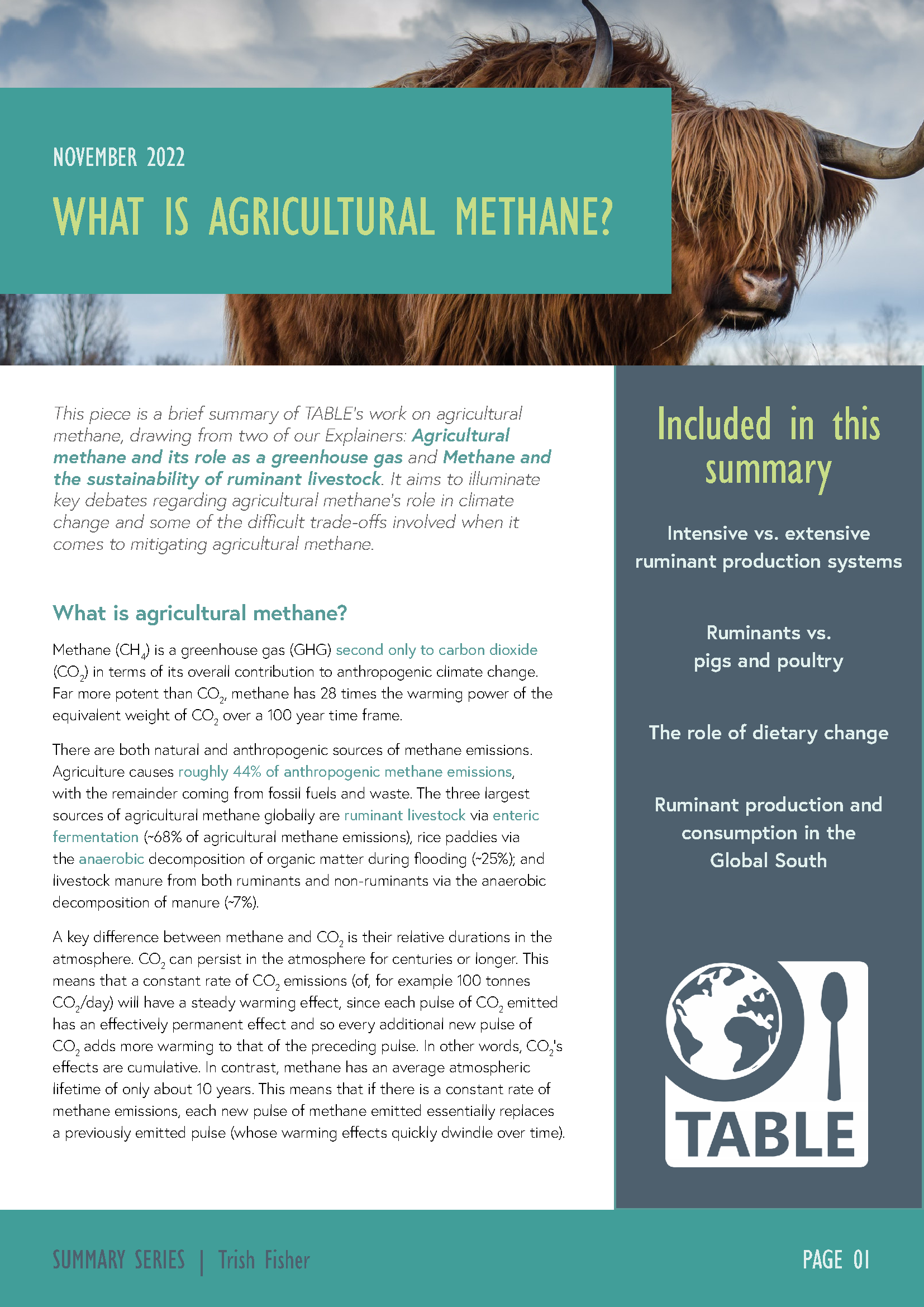

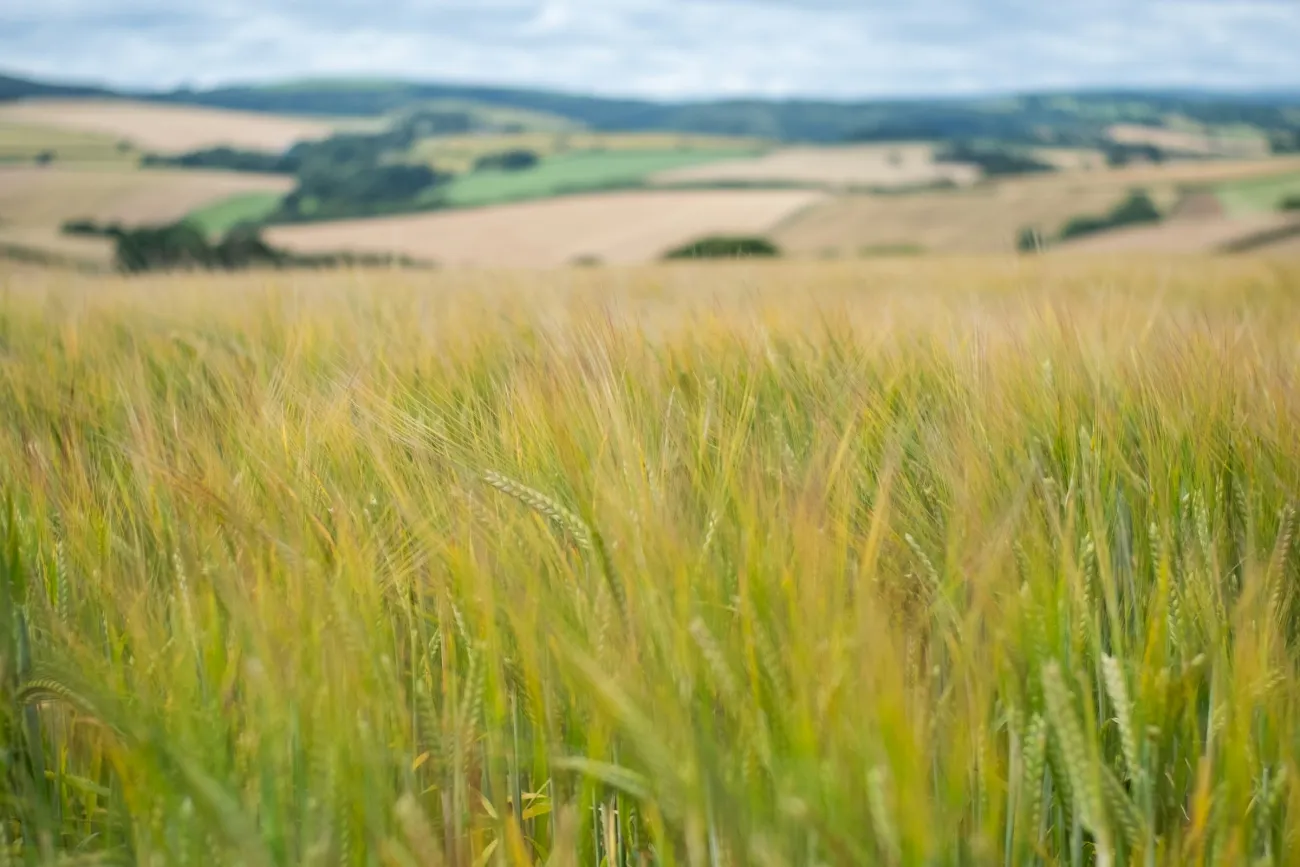


Comments (0)